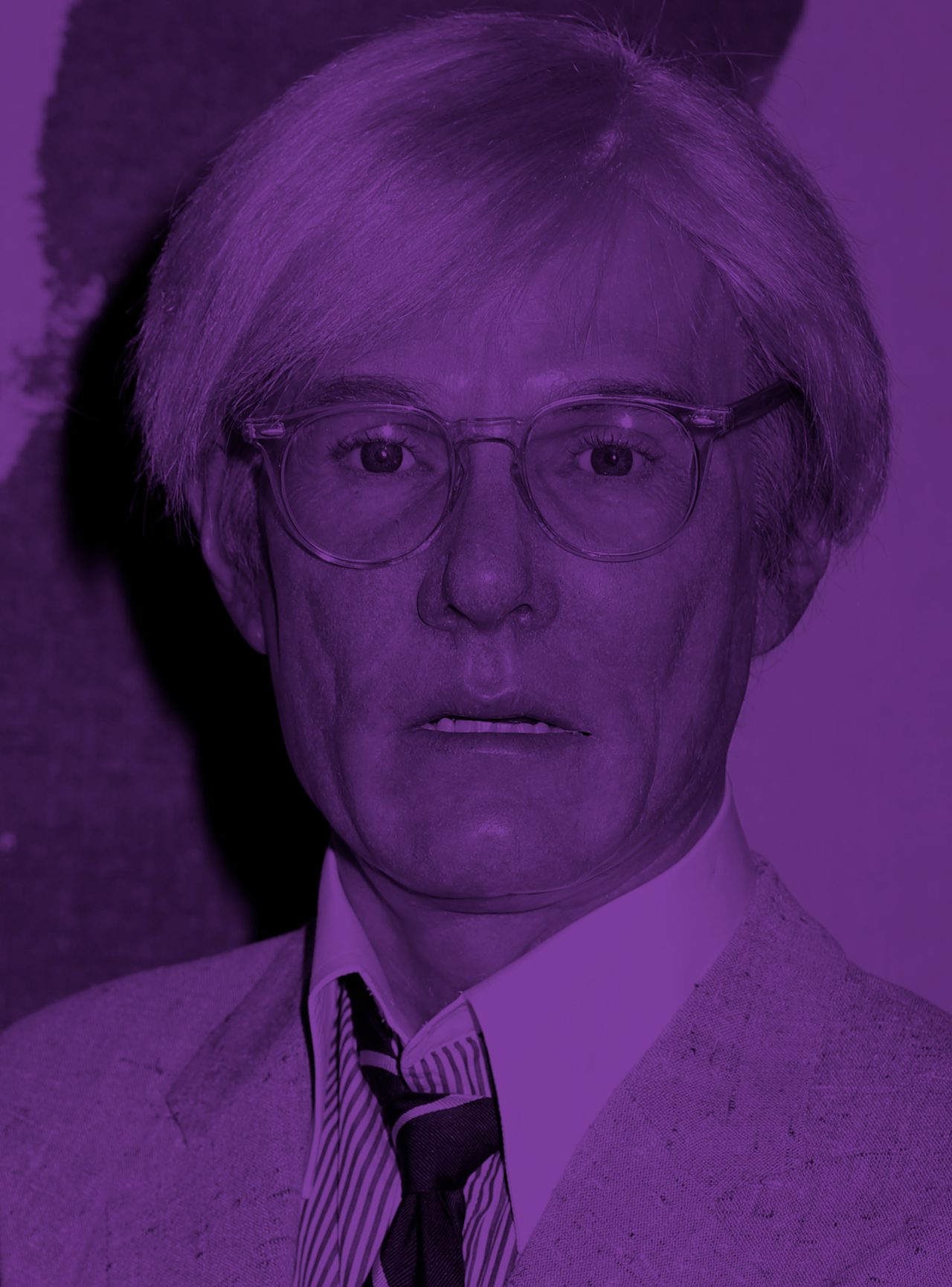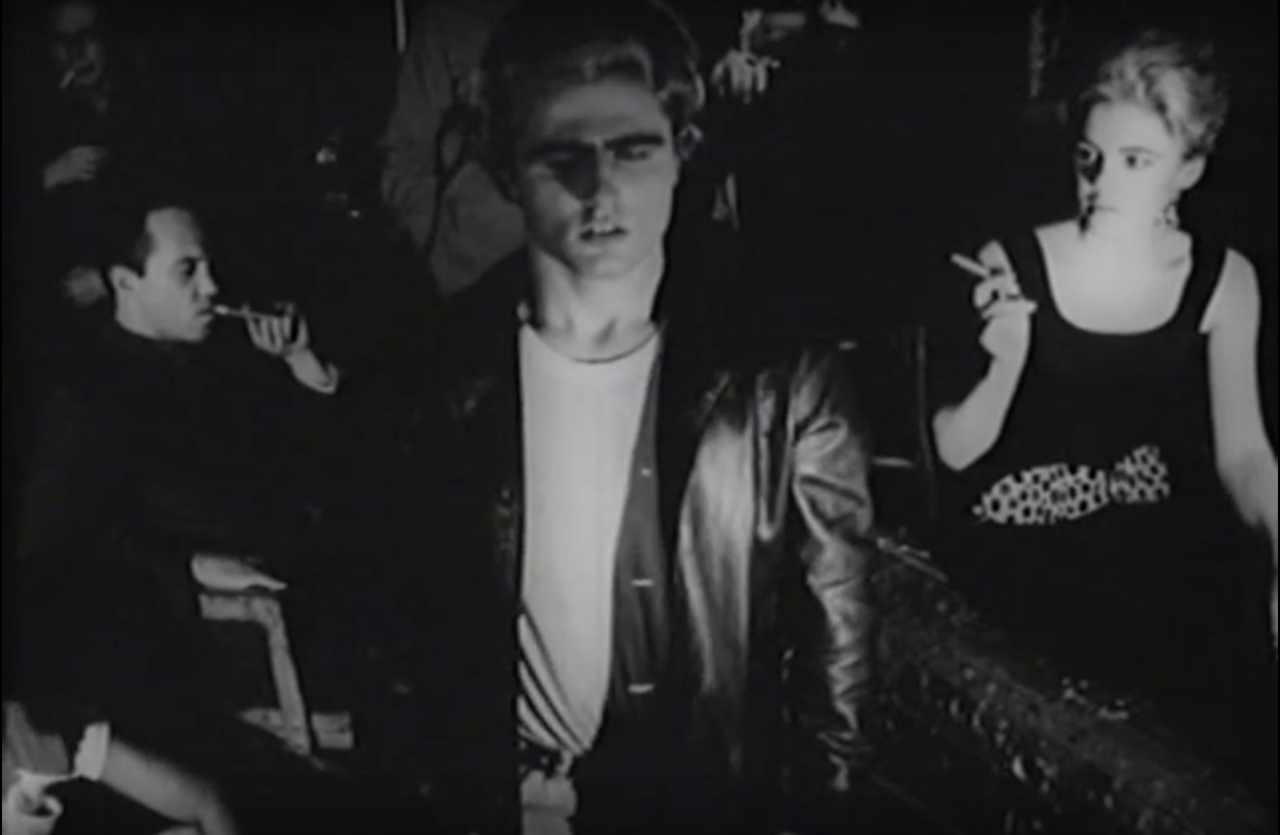Starting today, Stanley Kubrick’s A Clockwork Orange is available to stream on Netflix (it will also be re-released in the U.K., where it was met with an onslaught of criticism for instigating actual violence, next month). Kubrick’s colorful, anarchic film, originally released in 1971, is by far the most well-known adaptation of Anthony Burgess’s 1962 dystopian novel of the same name and it was just one of two Kubrick films to be nominated for the Best Picture Oscar (its poster can also still be seen in college dorm rooms across the country). But Kubrick’s film wasn’t the first time the story was interpreted for the screen — nor is it the weirdest interpretation, for that matter. That would be Andy Warhol’s Vinyl, an oddly clustered black-and-white film loosely based on Burgess’s novel that was released in 1965.
Vinyl is only an hour long, but it’s claustrophobically erratic and even difficult to watch, at least compared to Kubrick’s version. Written by Warhol’s frequent yet often-uncredited collaborator Ronald Tavel, it was made at a time when the artist was making films as quickly as possible; his output was enormous, but was lacking in quality. It’s shot on one camera that appears to be stuck a the corner of his legendary New York studio The Factory, as if it were installed for surveillance. Several different actors wander on- and-off camera; the central focus is often difficult to flesh out.
Not surprisingly, there weren’t a lot of mainstream press reviews of the film at the time of its release, as opposed to several negative reviews appearing the following year with the release of Warhol’s better known Chelsea Girls. (One fun fact: Vinyl was projected during Velvet Underground gigs on St. Mark’s Place, where Warhol would place color gels over the black-and-white scenes.) In a 1972 profile of Kubrick — which derided his film as intellectually-devoid “popfad art” — didn’t mention the Warhol version by name, but said that Kubrick added some shock-inducing “Warhol freakery” to his own adaptation. Five years later, *The New York Times highlighting an upcoming screening of Vinyl at the Cinema Collective calling it a “psychologically brutal adaptation” of the story.
Vinyl centers around blonde-haired Victor, a young man in a state of ethical strife played by Warhol’s assistant Gerard Malanga. Victor is caught beating up an “intellectual” carrying a pile of newspapers and is arrested to then be “cured” by a doctor. As Victor’s story unfolds, other unnamed figures meander in the background, including two mysterious men slapping and smacking their unknown captive. Also present is Warhol muse Edie Sedgwick as a silent onlooker (Vinyl is often credited as her debut, but she appeared in the far more violent Horse earlier in 1965).
While the actors’ bodily movements are fluid and chaotic, the dialogue becomes the film’s focal point; a number of different voices spout random proclamations regarding ideas such as good versus evil, divine providence, and conflicting identities. Victor himself exclaims dumb koans like “I do bad because I dig doing bad.” Not unlike Alex in the Burgess and Kubrick versions , he’s a simple-minded juvenile delinquent, constantly causing trouble and struggling with authority.
In his act of “curing” Victor, the white-clad doctor ties him to a chair, rips off his shirt, places a sadomasochist leather bondage mask over his face, and wraps leather straps around his chest. As this occurs, the credits are read out loud by a narrator. At this point, the movie is only halfway over. In a 2002 interview, Tavel stated that this was done to “[remind] the viewer that this is a movie, to never let you get involved with it as real, and to remember always that you are watching something staged.” The film ends with the Kinks’ “Tired of Waiting For You” playing on an off-camera record player, and Victor on his knees facing the camera as the doctor slowly cuts his blonde hair in an act of rebirthing.
As with a lot of great art, Vinyl may have needed time to marinate in cultural consciousness before becoming more widely appreciated. In 1989, The Chicago Reader’s Fred Camper wrote that Vinyl, along with other Warhol films like Blow Job and Chelsea Girls, was “vital and original,” asserting that early Warhol films are worth seeing because of “the elegance of their imagery, their redefinition of cinematic time, and their further reflections on the theme of emptiness.” Stephen Koch, in his book Stargazer: The Life, World and Films of Andy Warhol, wrote that Vinyl is one of the most intriguing sadomasochistic films of all time. “If it is to be intended as entertainment,” he said, “it must be judged a failure,” and instead asked the viewer to celebrate the many paradoxes within the film. Vinyl was even included in the reference book 1,001 Movies You Must See Before You Die, along with Kubrick’s A Clockwork Orange.
Vinyl broadly explores major themes of redemption, anti-authoritarianism, and surveillance that appear within Burgess’s novel, and is considered to be an important part of Warhol’s legacy in the art world. New York’s Museum of Modern Art screened the film in 2017, as did the Andy Warhol Museum in his hometown of Pittsburgh. The Brooklyn Academy of Music screened the film as part of the 2017 BAMcinématek series dedicated to avant-garde filmmaker and artist Leslie Thornton, citing Vinyl as a strong influence on Thornton’s most famous work Peggy and Fred in Hell: The Prologue. And last year, the Anthony Burgess Foundation hosted a screening; Artnet claimed that Vinyl is one of nine Warhol films that changed film history.
According to the Burgess Foundation, the author himself was uncertain about how to end his novel, and eventually wrote a final chapter in which Alex confesses his wrongdoing and changes his ways after being psychologically “cured.” (this is also how the British version ends). “The final chapter of the book is redemptive,” writes the Foundation’s site, “with Alex growing up and renouncing violence of his own accord.” For the American version, however, the final chapter was lopped off, and the book ends with Alex fantasizing about committing crime; this was the ending Kubrick used.
Vinyl ends in redemptive fashion similar to the British version, with the doctor removing Victor’s bonds and embracing him. In the right corner of the shot, Sedgwick is seduced by an unknown man wearing black leather. Warhol’s final scene of an affectionate embrace with the lurking potentiality for further deviant behavior is closer to Burgess’ story but, like in Kubrick’s version, the ending is mysterious, chaotic, and suggestive of something more to come.
The movie today exists as both a sign post of Warhol’s oeuvre, a counterpoint to Kubrick’s better-known film, and a time capsule of what seemed transgressive in 1965. Vinyl may have confused or shocked viewers in its day, but when viewed on YouTube, its dissidence is not nearly as astonishing. Still, its loose interpretation transgresses what it typically means to adapt an already existing work. If only for that, it’s worth revisiting in tandem with Kubrick’s version.



